20th July 2010. Written by Xin Li.
Kyoto, Kansai, Japan.
With a flight at midnight, it meant that I have half a day left to explore Kyoto before leaving for the airport. Until then, I have yet to visit two very well-known landmarks of Kyoto that is on the top of almost every visitor’s list to Kyoto. Then again, Kyoto has so many sites to visit which qualifies to be the top as well.
The first place that I visit (thanks to the very convenient ROKU Sightseeing Bus that brings you to all the major sites in Kyoto) was none other than an icon of Kyoto itself, the world famous Golden Pavilion, the Kinkaku-ji (金閣寺), a popular name for Rokuon-ji, the proper name of the temple.
Once a villa called Kiyayama-dai, belonging to a powerful statesman named Kintsune Saionji in the 1220. The current Golden Pavilion dates back to the late 1300s and early 1400s under Shogun Ashikaga Yoshimitsu, the third shogun of the Ashikaga clan of the Muromachi Period.
The 3-storied pure gold-leaf covered structure (kinkaku) was formally called Shariden and it is actually a combination of three architectural styles. The first floor represents Shinden-zukuri, the palace style. The second floor is Buke-zukuri, the style of the samurai house and lastly the third floor is Karayo style (Zen temple style)
Despite the fact that the current structure is actually a replica of the original which was burnt down in 1955 by a monk, the sight of the golden pavilion with its shimmering reflection on the calm Mirror Pond (Kyoko-chi) was simply stunning and breathtaking. I also noticed a moment of silence when fellow visitors caught sight of the kinkaku.
“Picturesque”, “walking into a painting”, these are just some descriptions that could barely describe the very first instance when I saw the Golden Pavilion. It was a beautiful sight indeed. An almost perfect composition with a stunning scenery as backdrop (and thanks to the fine weather and a not to big crowd), it was a memory that I will remember for a long time.
I have seen quite a few of these make-shift resting places set up in other sites like the Sanzenin or Uji before and I would always go for a dessert rather than a cup of matcha and sweet at these places. However, since I am going to fly off really soon and I didn’t expect a return anytime soon, I decided to just give it a try plus it looked really relaxing under those trees.
I was in for a pleasant surprise! They served the matcha chilled. I always thought it was served warm (not something I would like under in the heat of summer). The waitress also explained how to consume the sweet (wagashi). One has to consume the sweet first before consuming the matcha.
The combination worked like magic. The sweet (with a gold leaf) has very nice velvety, flaky, fluffy mildly sweet crust which contains red bean paste inside. Together with the bitter yet fragrant matcha, it is as if one has consumed a harmonious pair of wine and cheese. Simply put, it was a piece of nirvana.
Immediately after my visit to the Golden Pavilion, I headed for another famous sight in Kyoto which is a must-visit for architects, landscape designers, artists, poets and gardeners. Just a short walk away from Kinkaku-ji is Ryoan-ji (龍安寺) which was introduced to me by the sensei I met at Ichisun.
Ryoan-ji is widely known for its simple rock garden that dates back to the 15th century. The garden, measuring only twenty-five meters from the east to west and ten metres from the south to north consisted of only white sand and fifteen rocks carefully laid out by a monk (believed to be Tokuho Zenketsu) is a huge contrast to the gardens of court nobles of that era.
This garden is the epitome of Japanese dry landscape gardening as well as Zen art and it was designed to be ambiguous so that the viewer will find out what it signifies, so each visitor may have a different perception or experience. The longer to gaze at it, the more varied our imagination will become. I guess Bill Viola probably got inspired by this.
Ryoan-ji was generally known as Oshidoridera, the temple of the mandarin ducks as well because of the mandarin ducks that were seen at the Kyoyo-chi pond. Although I didn’t see any mandarin ducks, I thought the scenery at the pond was pleasant and clever, because of the way they utilized the surround natural landscape as a backdrop.
There is simply too much to see in Kyoto. Come December, I shall visit this amazing city once more.
Subscribe to:
Post Comments (Atom)


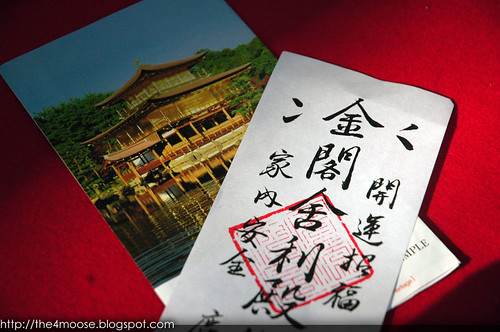
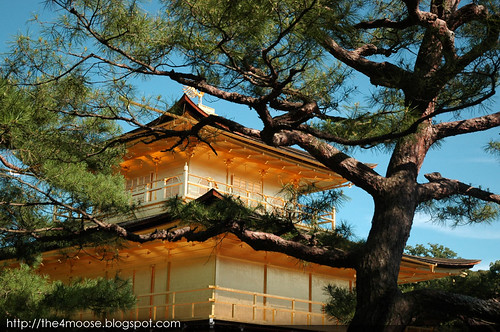
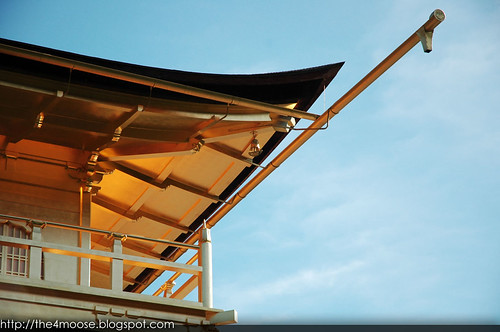
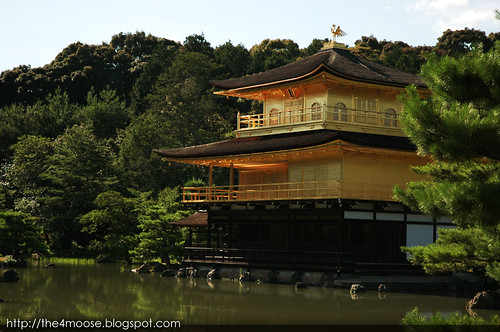
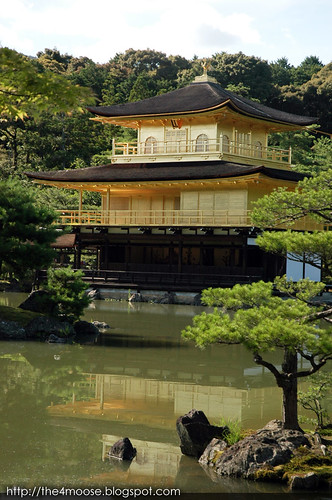
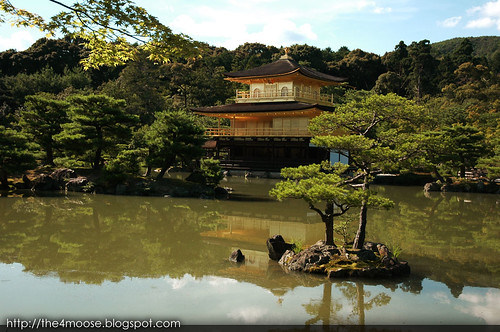
























0 comments:
Post a Comment
Note: Only a member of this blog may post a comment.